MATERIAL AND LEATHER
- 1 piece of leather 20x30 cm - thickness 1.2 to 1.4 mm for the soles
- 1 piece of leather 20x30 cm - thickness 0.5 to 0.8 mm for heel reinforcements and patterns
- 1 piece of leather 30x40 cm - thickness 1 mm for the heels and uppers of the slippers
We invite you to go see our Sweet 2 or Granite ranges for the choice of leather.
- Approximately 65 cm of 5 mm wide elastic
- A spool of polyester thread no. 30 - diameter: 0.41 mm
- A silver pencil
- A safety pin
- Sewing clips or double-sided tape
- A sewing machine
The downloadable pattern and pedometer includes sizes 15 to 16 (0 to 5 years). Seam allowances are included.

GOOD TO KNOW: we sell complete kits made in our workshop with leathers from our Granite range or pieces of suede split leather.
HOW TO SEW LEATHER WITH A FAMILY MACHINE?
Please note that for the creation of this tutorial we recommend a thin and supple leather that can easily be sewn with a family sewing machine.
1. CUT OUT THE PATTERN PIECES
- Download the pattern in the tab at the top of the page.
- Print it in actual size.
- Using the pedometer, select the desired shoe size (size 15 to 26 - 3 months to 5 years)
- Trace the pattern and trace the pieces onto the leather using a silver pencil. Then cut them out with a pair of sewing scissors or a cutter. Seam allowances are included.
- Cut 4 strips of elastic:
- 2 strips of 6 cm to sew on the reverse side of the upper of the slipper (see step 2).
- 2 strips the length of the reinforcement strip adding 2 cm (example: 2 strips of 22 cm for size 21-22).
Each slipper is made up of 5 leather pieces :
- 1 heel
- 1 slipper top
- 1 sole
- 1 heel reinforcement
- 1 pattern (let your creativity run wild: fringes, butterfly, star, teddy bear, etc.)
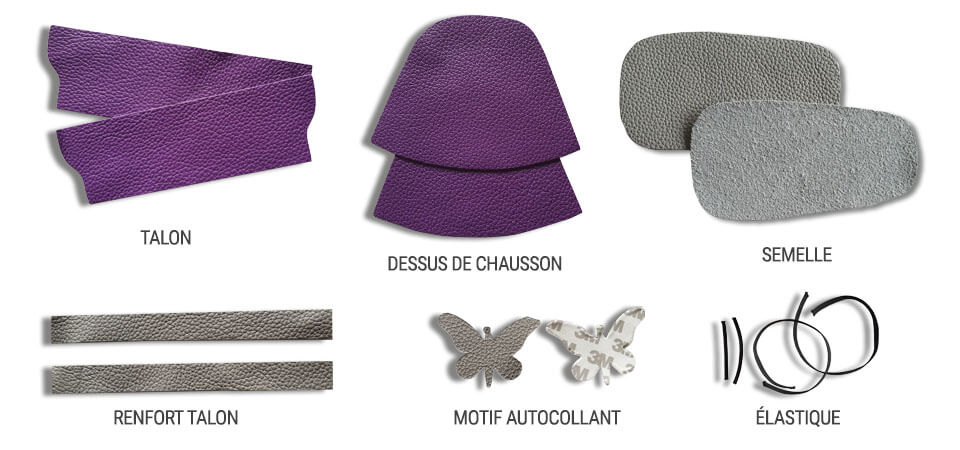
2. SEW THE ELASTIC
Fold the small elastic band in 2 and sew it to the reverse side of the leather (split side) of the upper of the slipper: seam in the center 3.5 cm from the upper edge (largest edge) for the first 3 sizes and 4 cm for the last 4 sizes 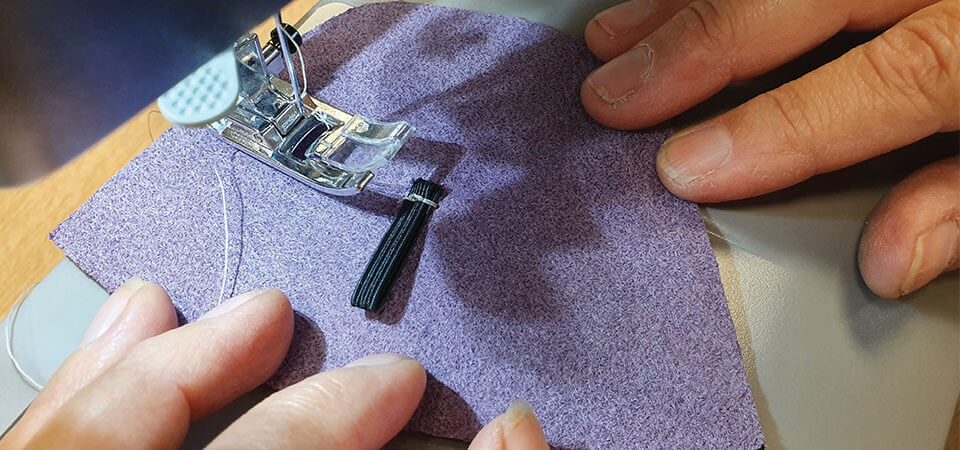

3. GLUE AND SEW A PATTERN ON THE UPPER OF THE SLIPPER
Glue and sew the pattern onto the right side of the leather - the grain side. This will hide the seam of the small elastic band. Be careful when sewing not to sew the elastic.
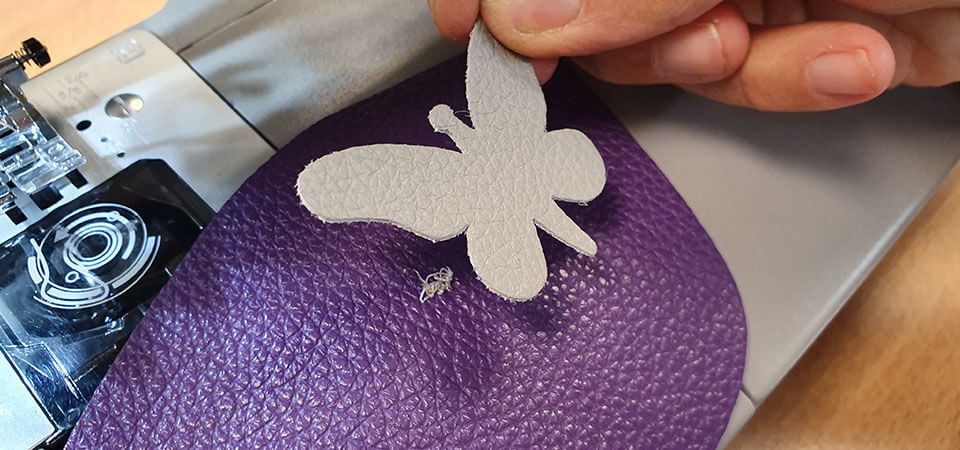
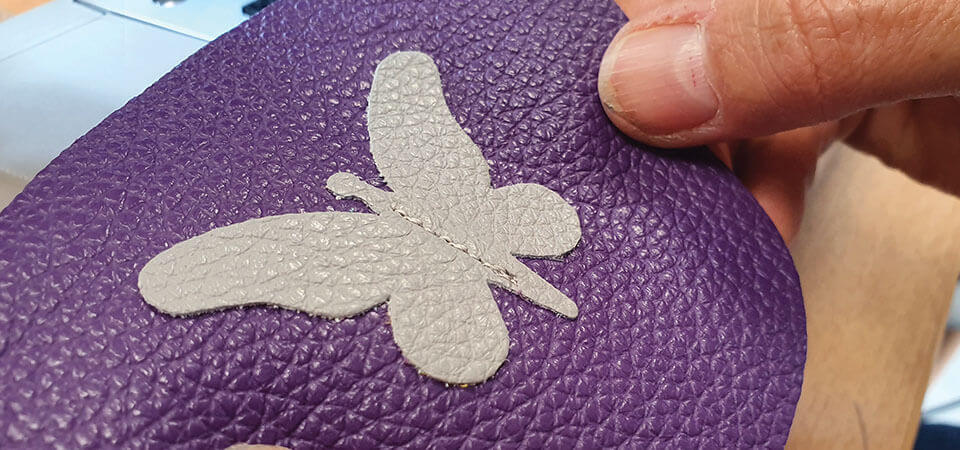
4. SEW THE UPPER OF THE SLIPPER
Place the top of the slipper (right side - grain side) on the sole (wrong side - velvet/crust side).
Tip: Use small pliers to hold the pieces in place.
It is important to respect the direction of the pieces so that once the slipper is finished, the velvet side of the sole is on the outside of the slipper in order to maintain grip on the ground.
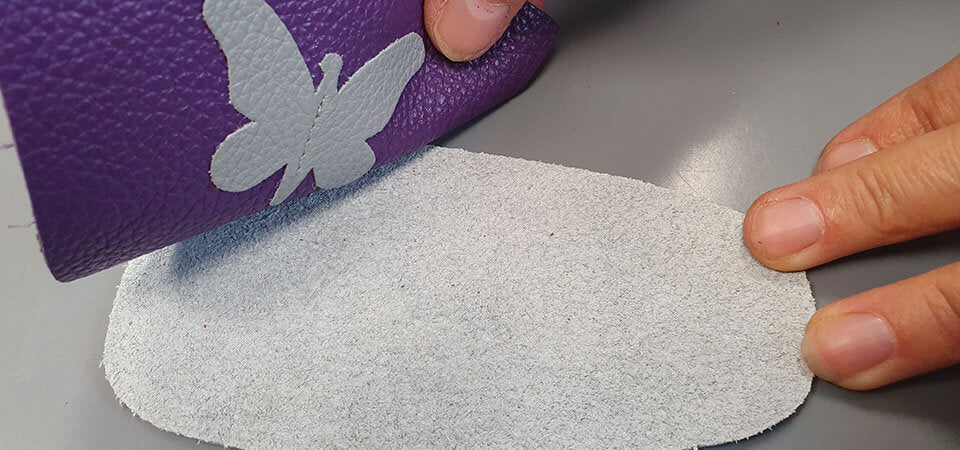
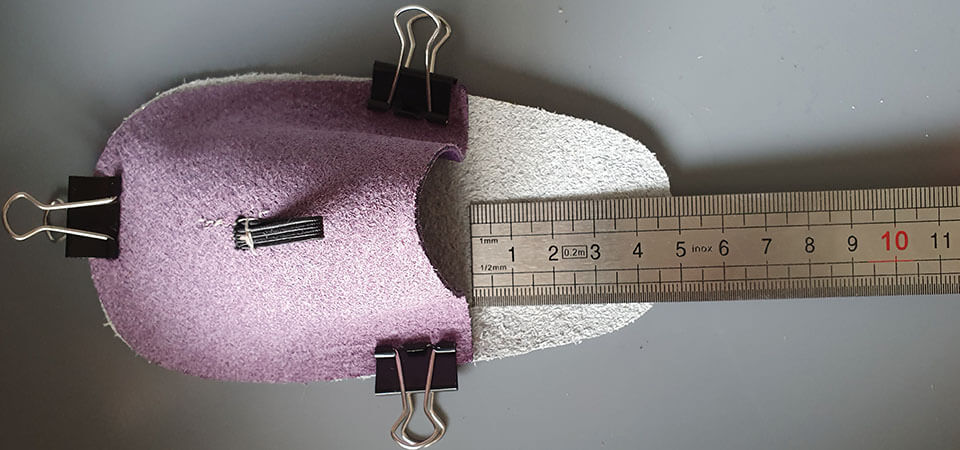
Start sewing from the center then go to the back and sew 4 mm from the edge to avoid too much thickness in the slipper.
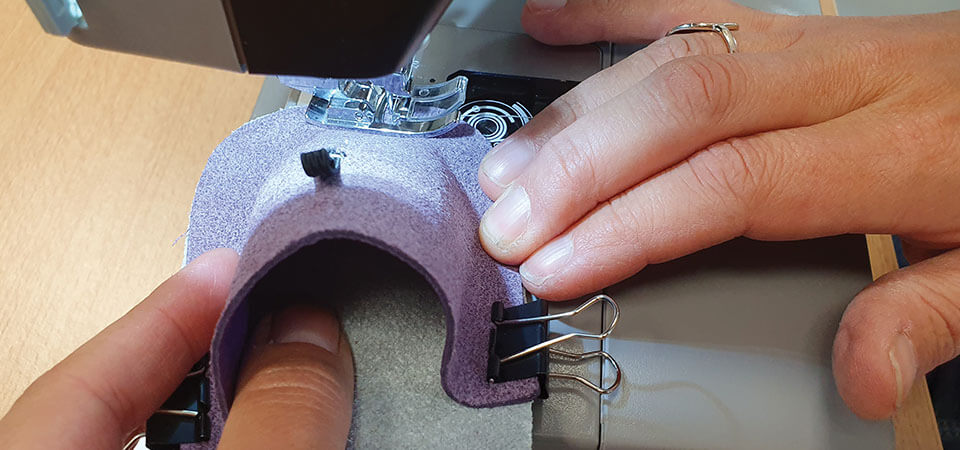
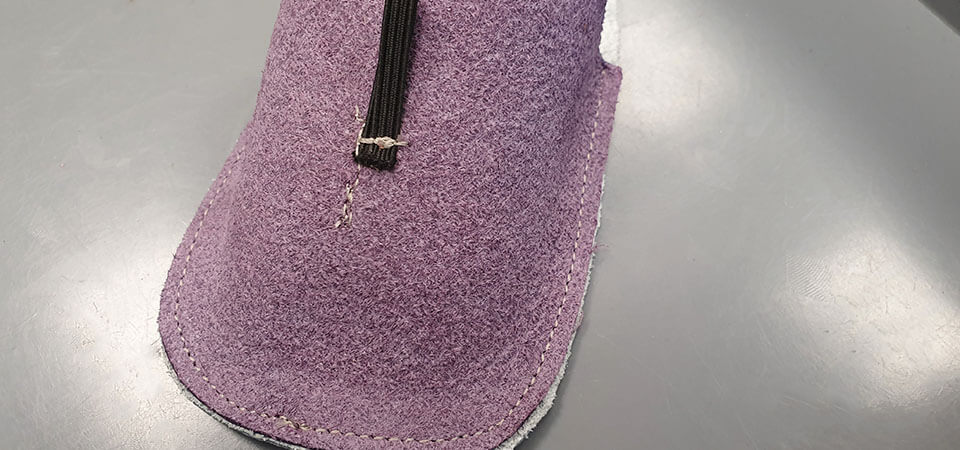
5. SEW THE HEEL
Position the reinforcement strip on the top of the heel and sew it on the right side - flower side (make 2 seams 3 mm from the edge parallel to the length of the strip). Do not hesitate to cut off the excess leather after sewing.
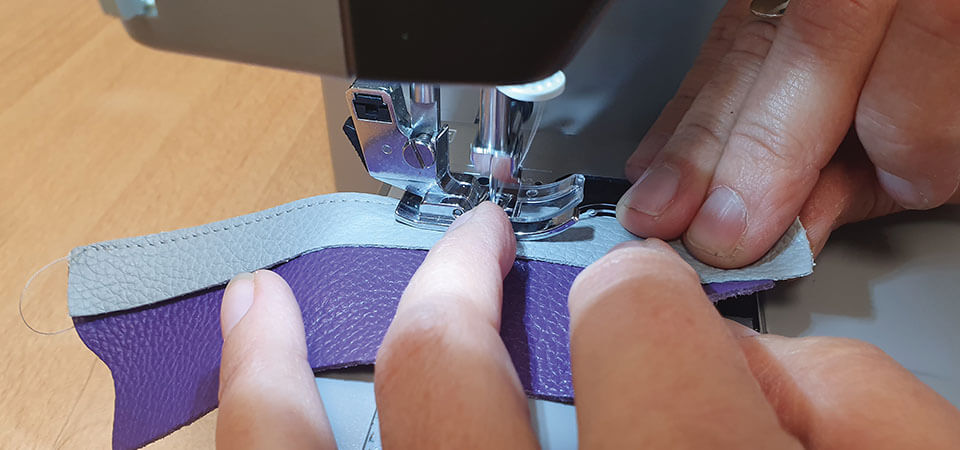
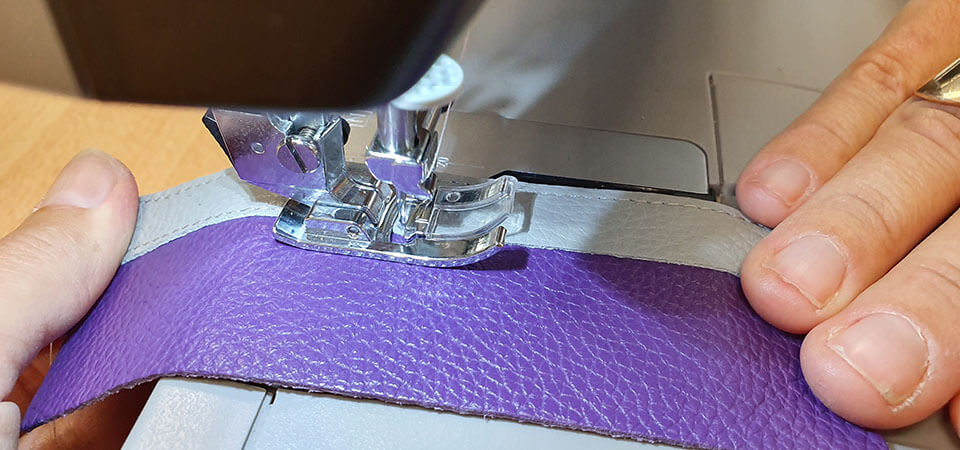
6. SEW THE HEEL ONTO THE SOLE
Place the heel (right side - flower side) on the sole (wrong side - velvet side) and sew it. Same tip: use pliers and start sewing from the center.
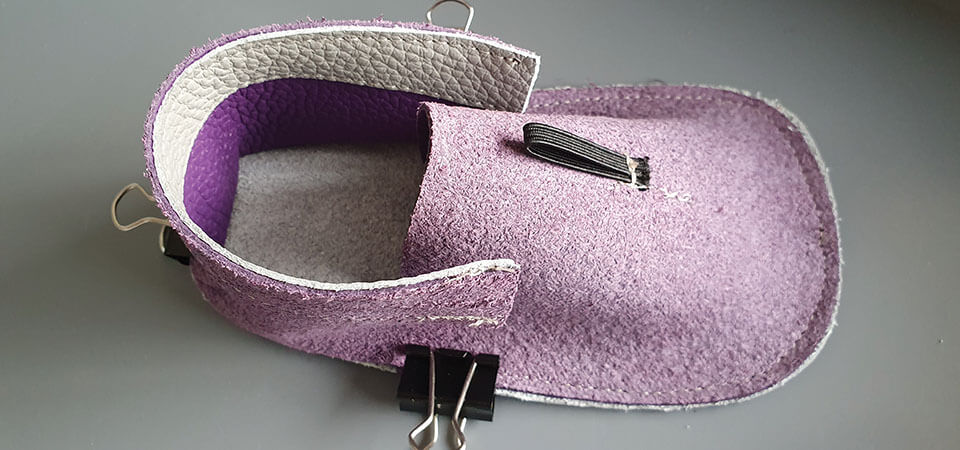
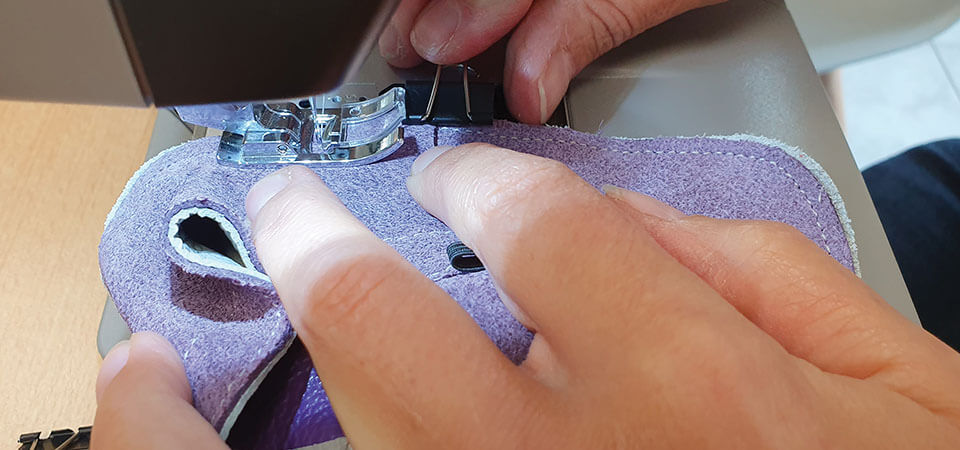
7. TURN THE SLIPPER INSIDE OUT
Turn the slipper inside out and press the seams well to give it a rounded shape.

8. PASS THE ELASTIC BAND THROUGH THE REINFORCEMENT
Using a safety pin, pass the elastic band through the reinforcement sewn onto the heel.
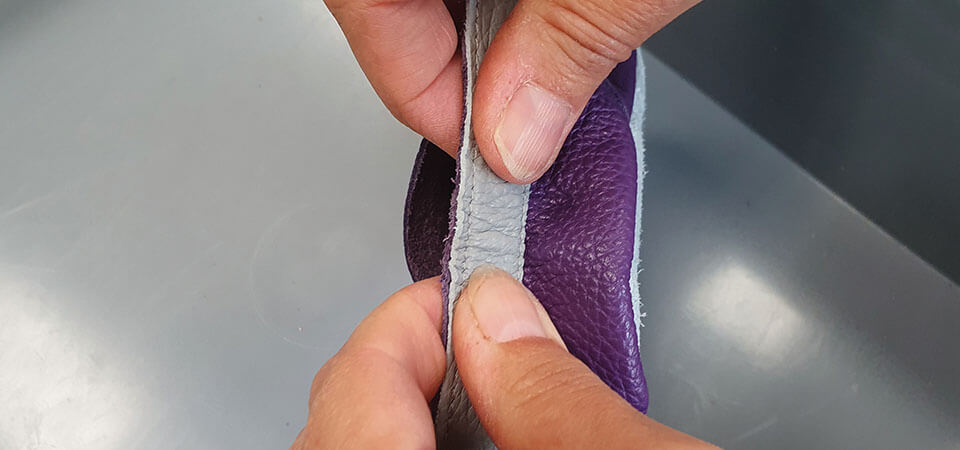
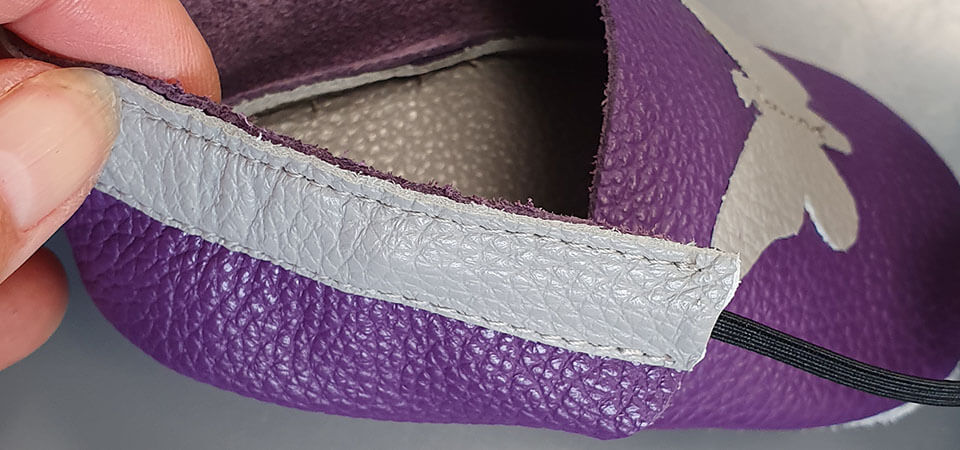
9. TIE A KNOT WITH THE ELASTIC
Pass the large elastic band through the loop of the small elastic band and tie a knot. The position of the knot will allow the slipper to be tightened more or less on the baby's ankle.
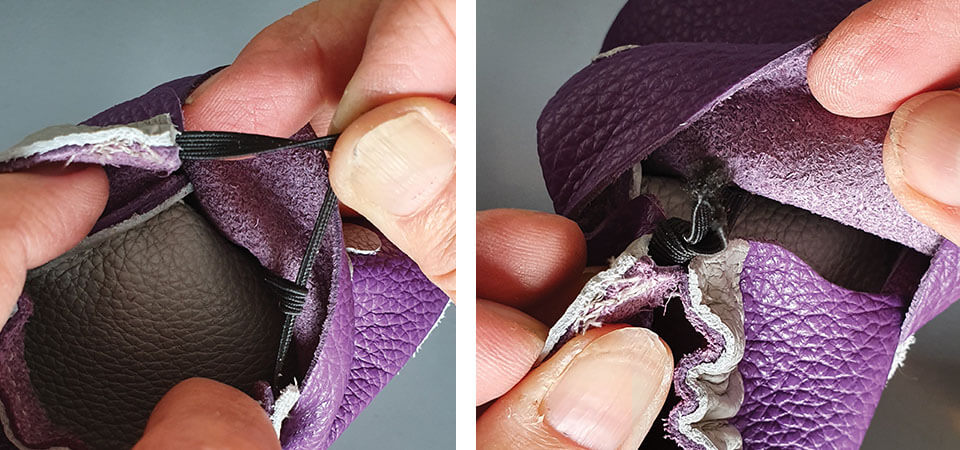
THE FIRST SHOE IS FINISHED, TIME FOR THE SECOND!
The shape is identical for the right and left foot.
Tip: You can add a little sheep's wool to the slippers to add a little softness and warmth.
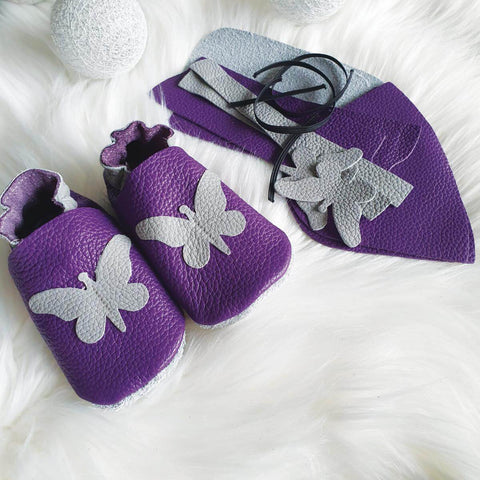 |
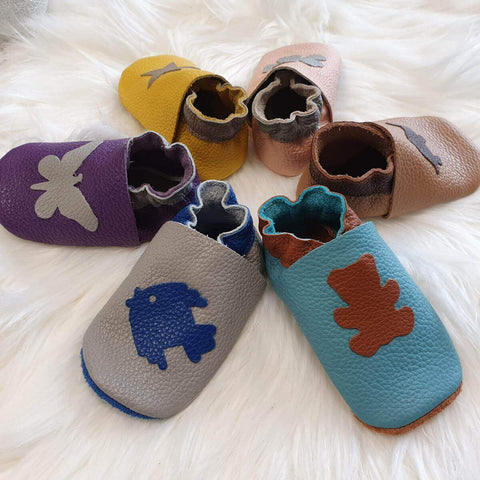 |




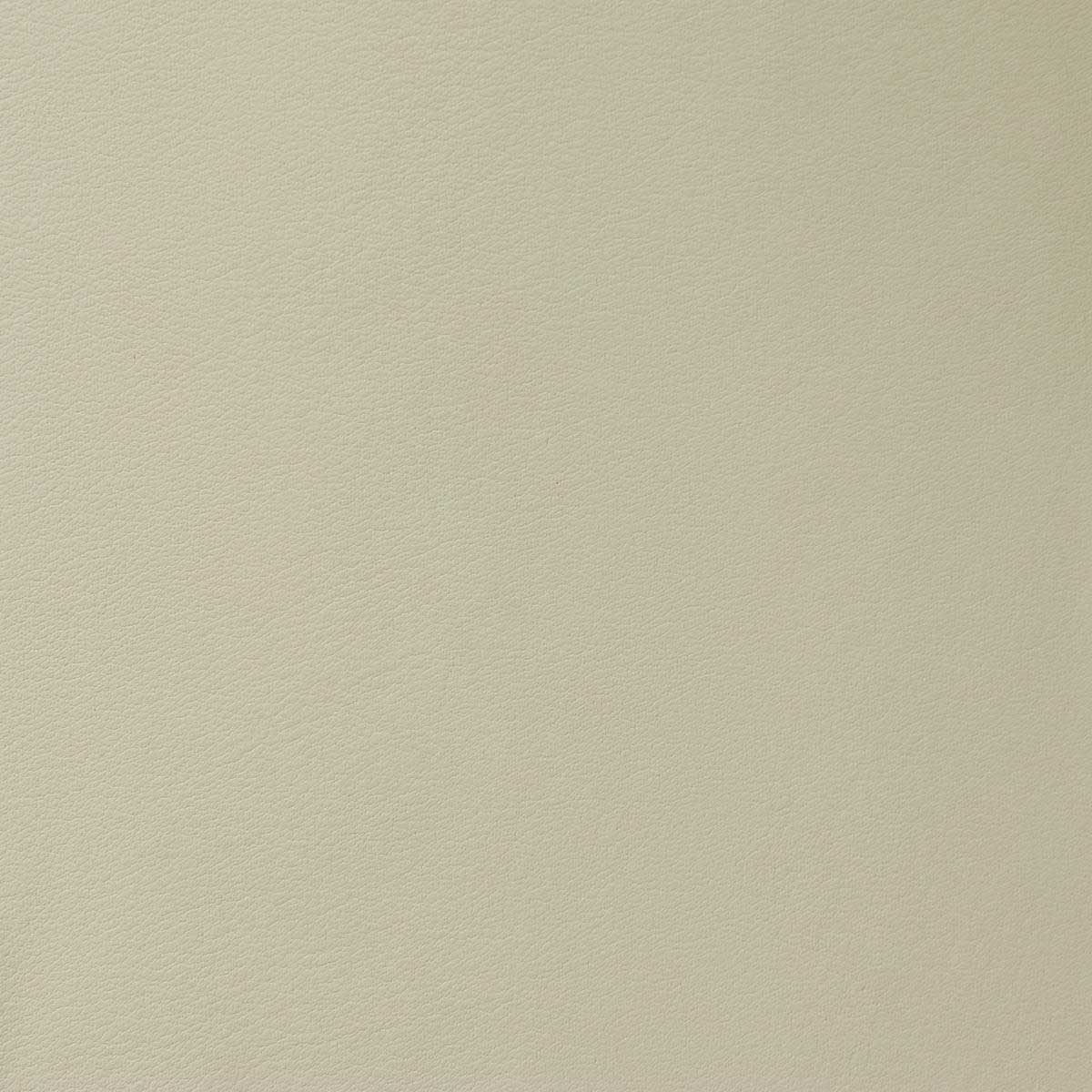

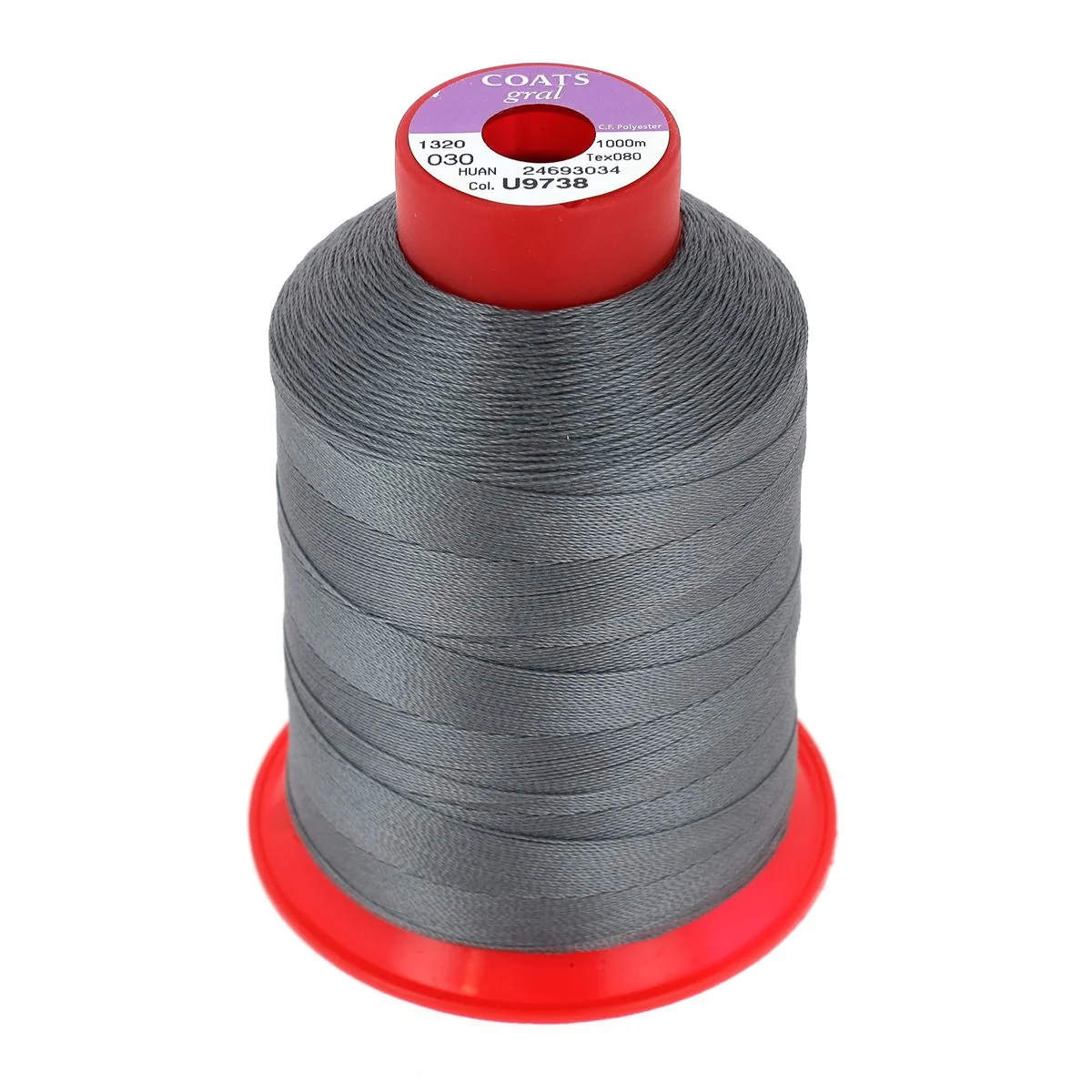



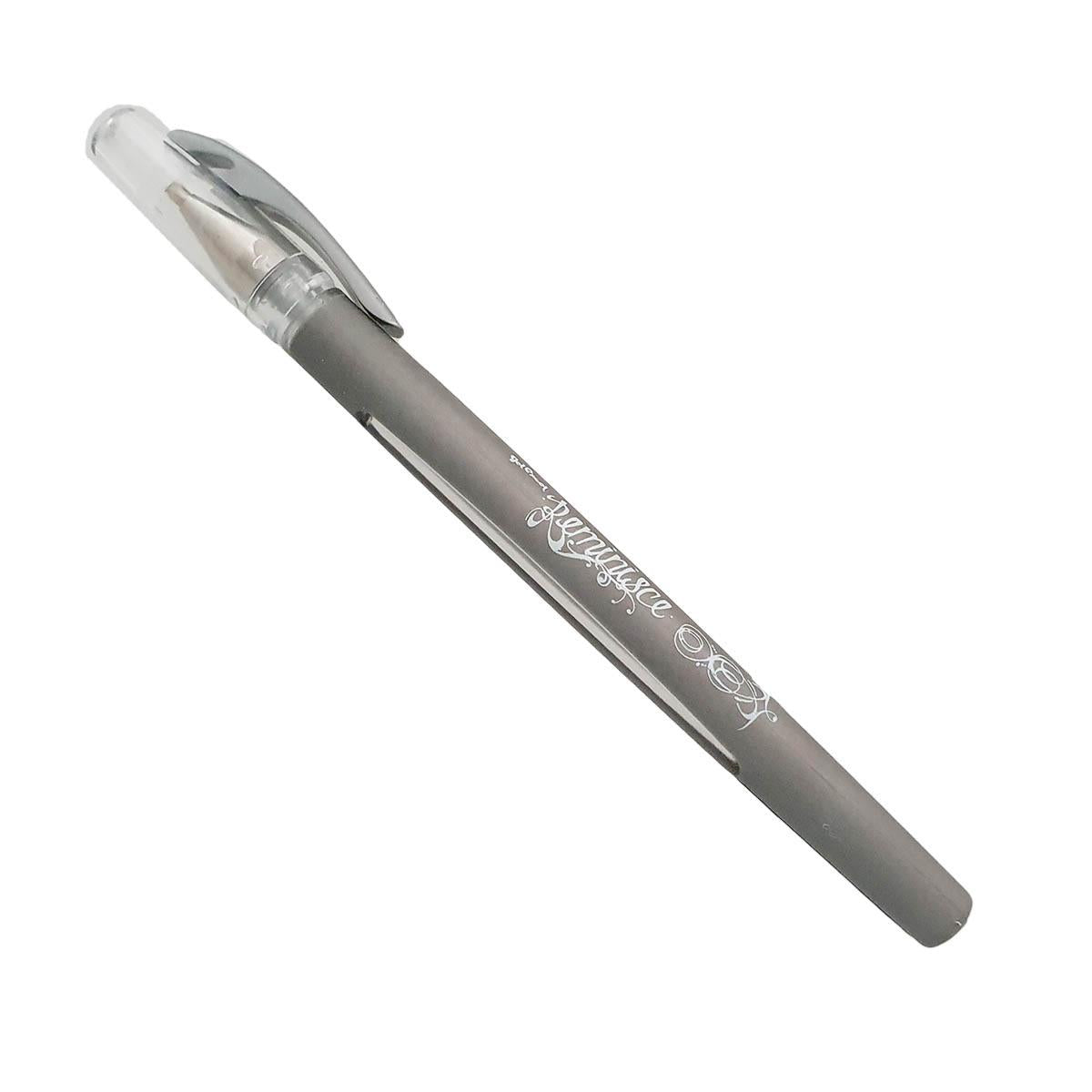







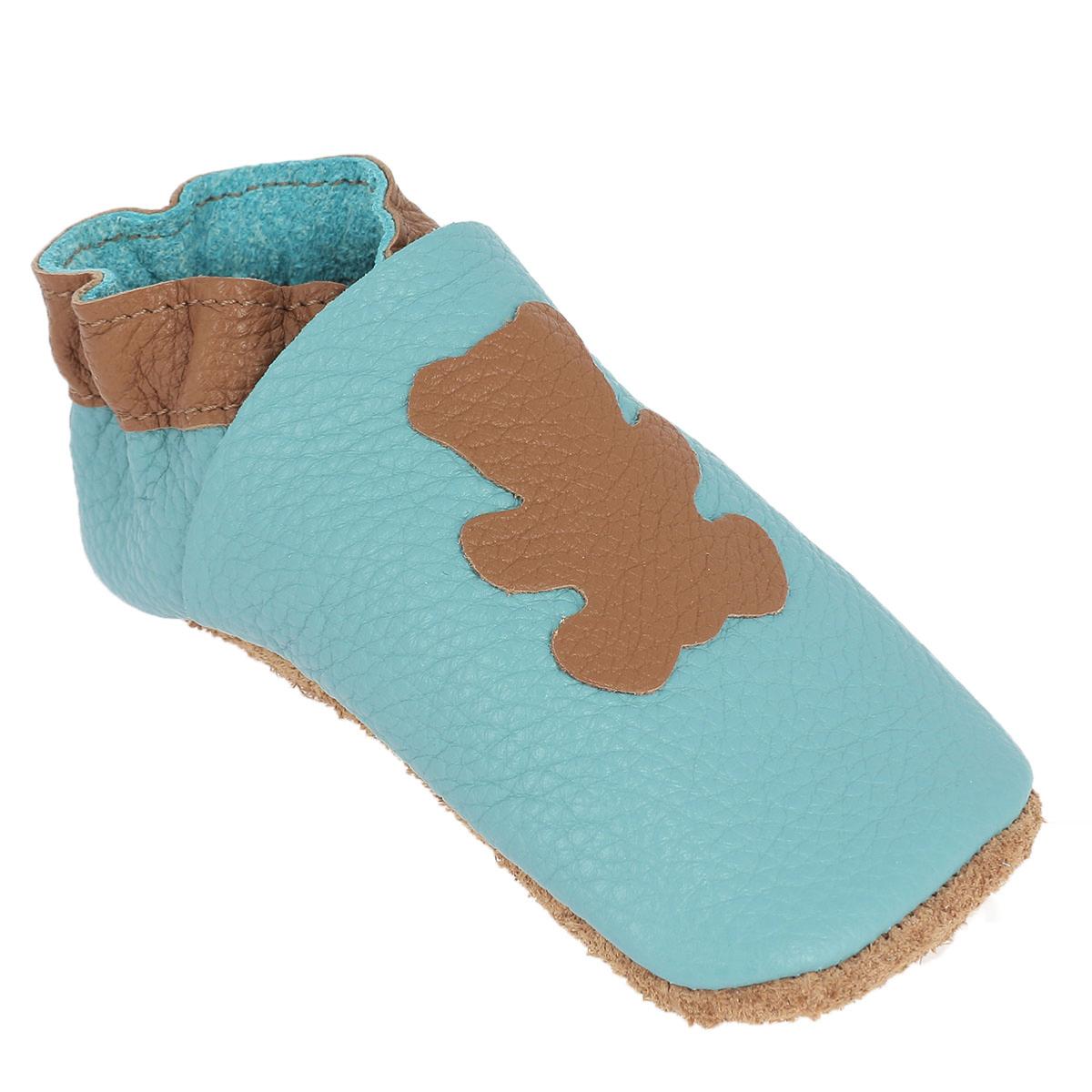
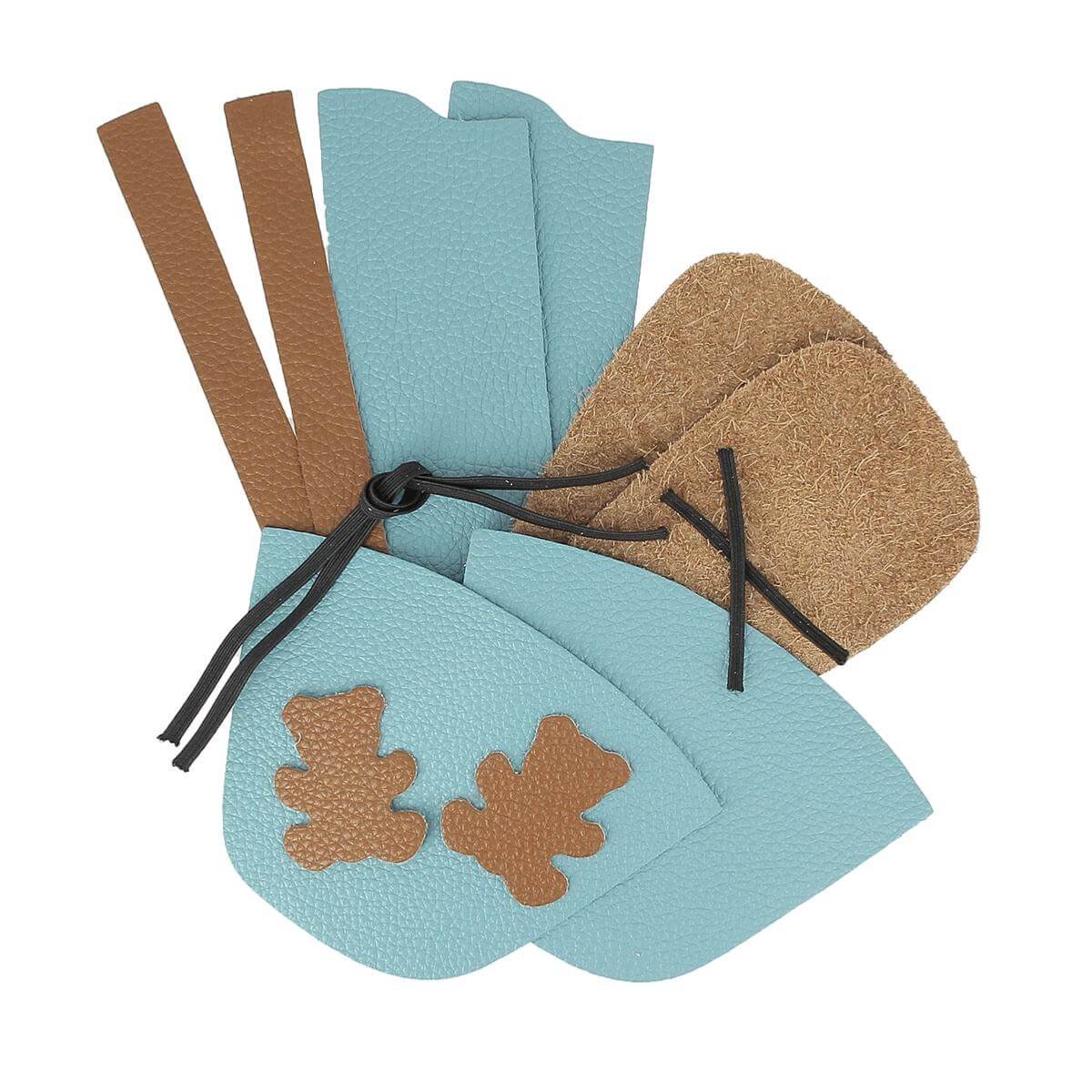
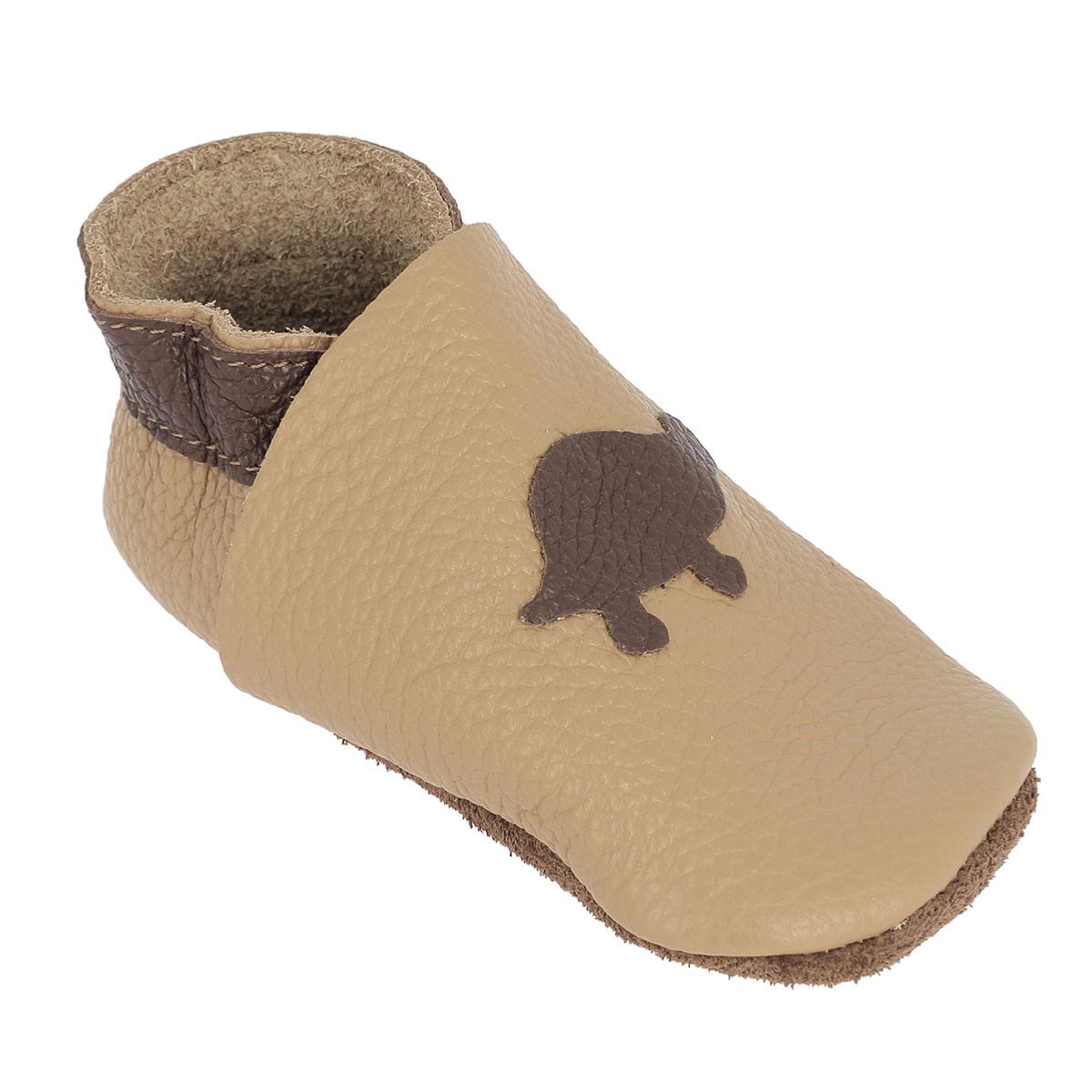
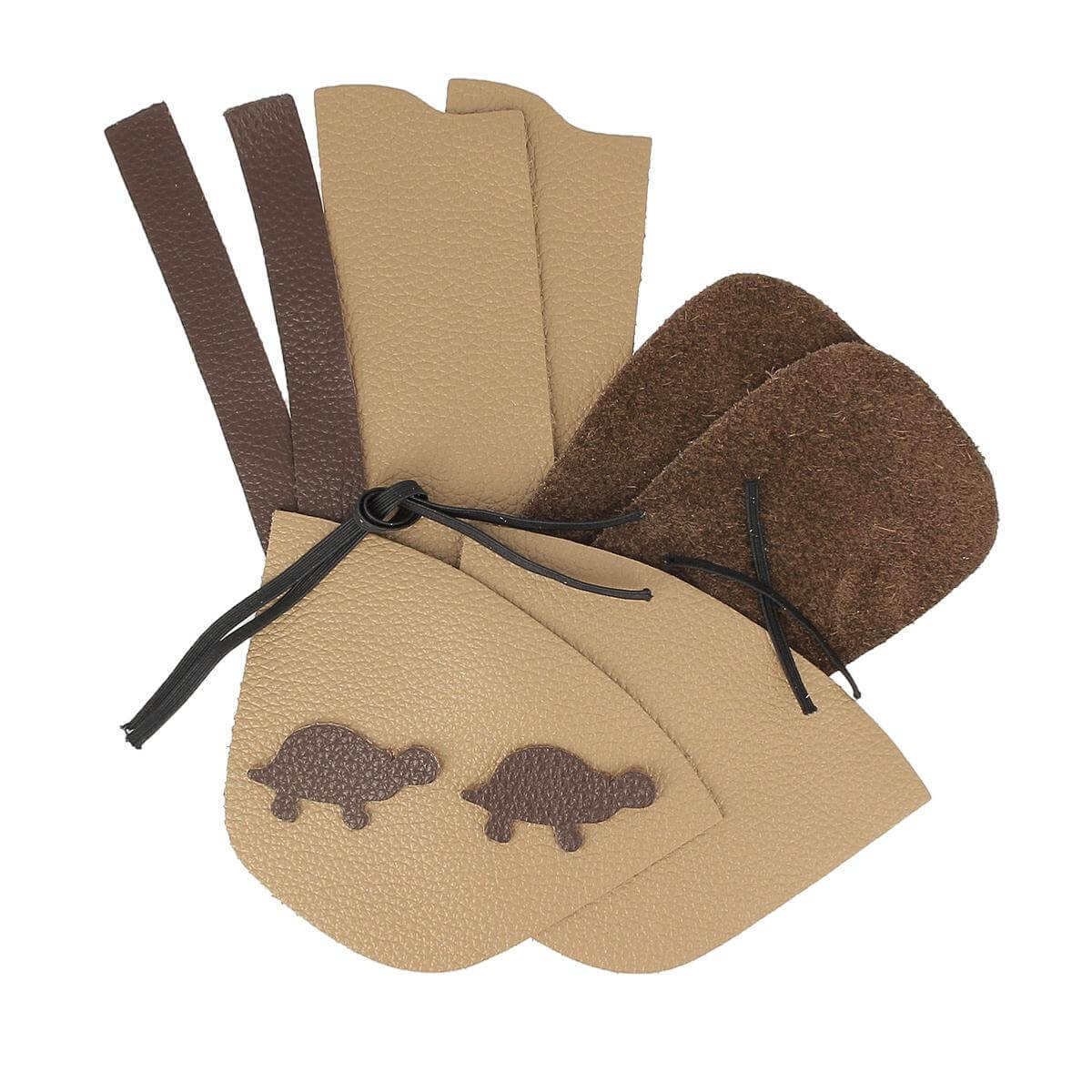
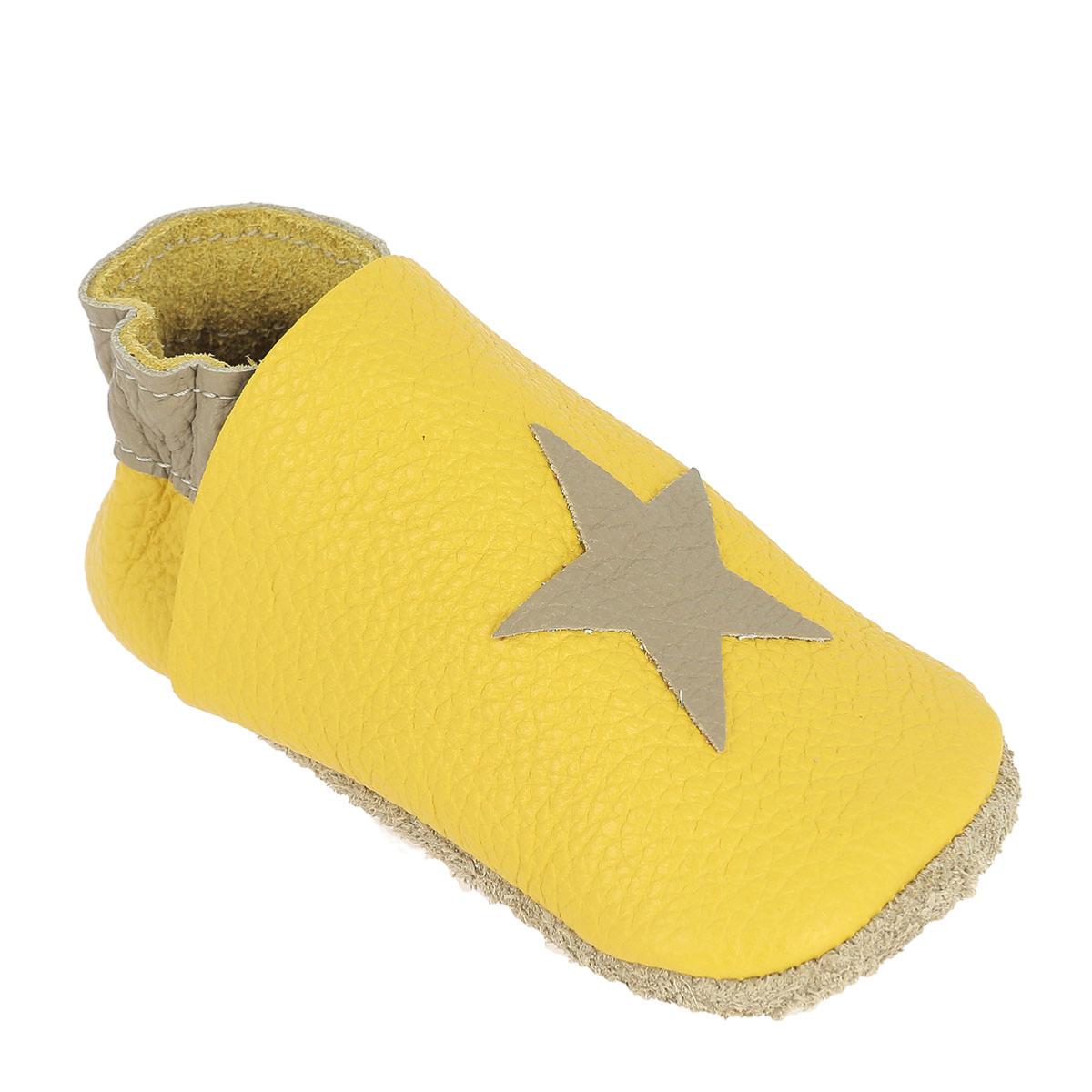
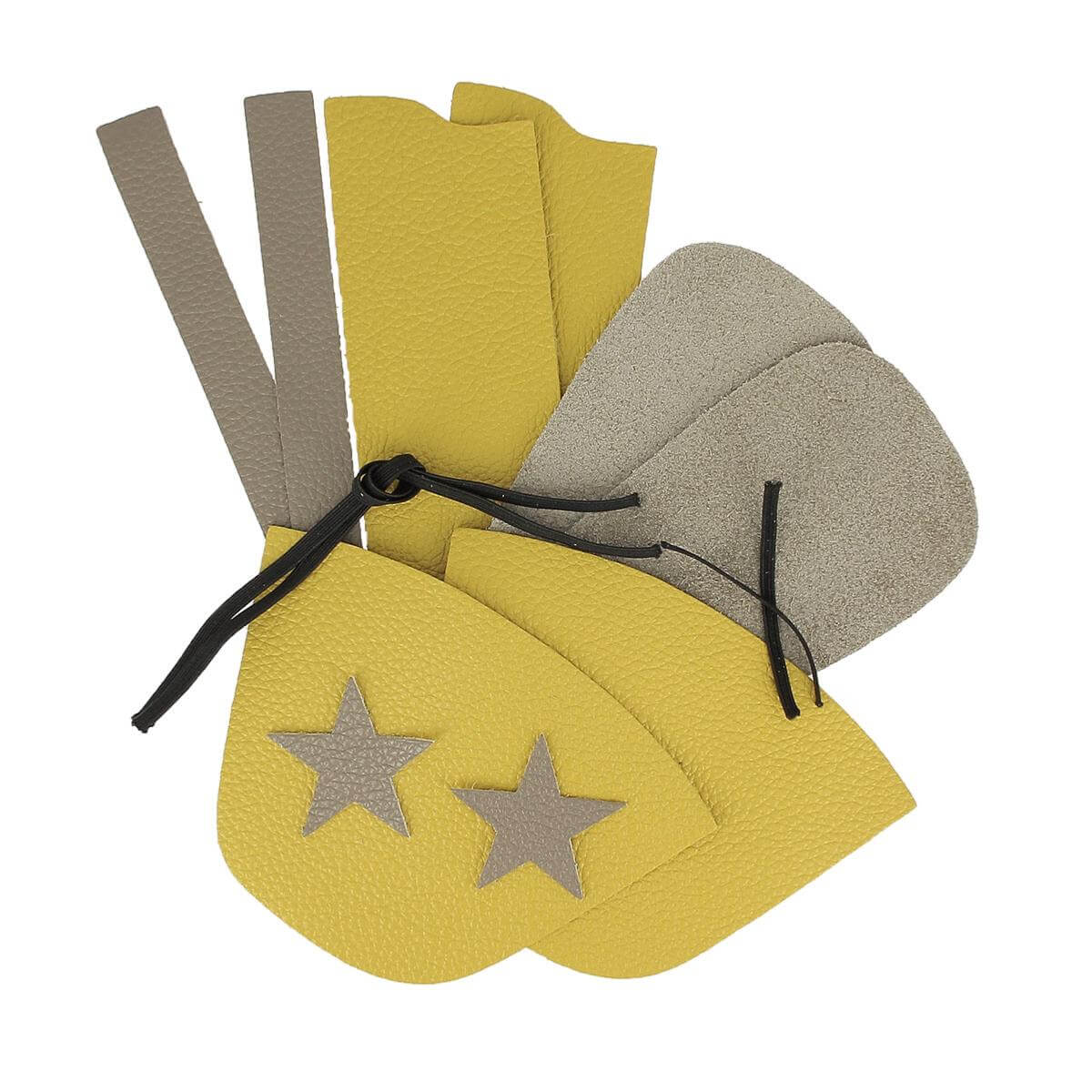
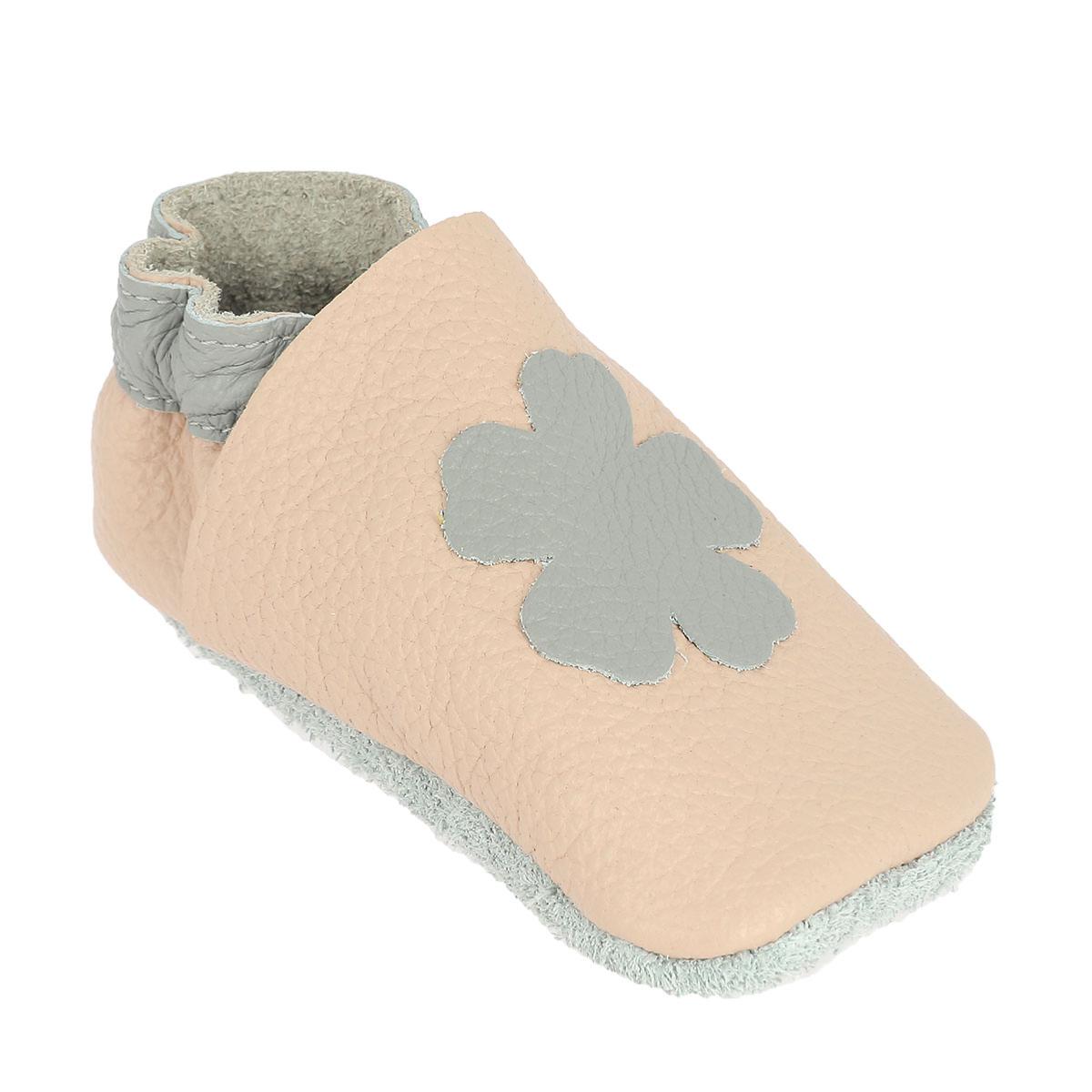
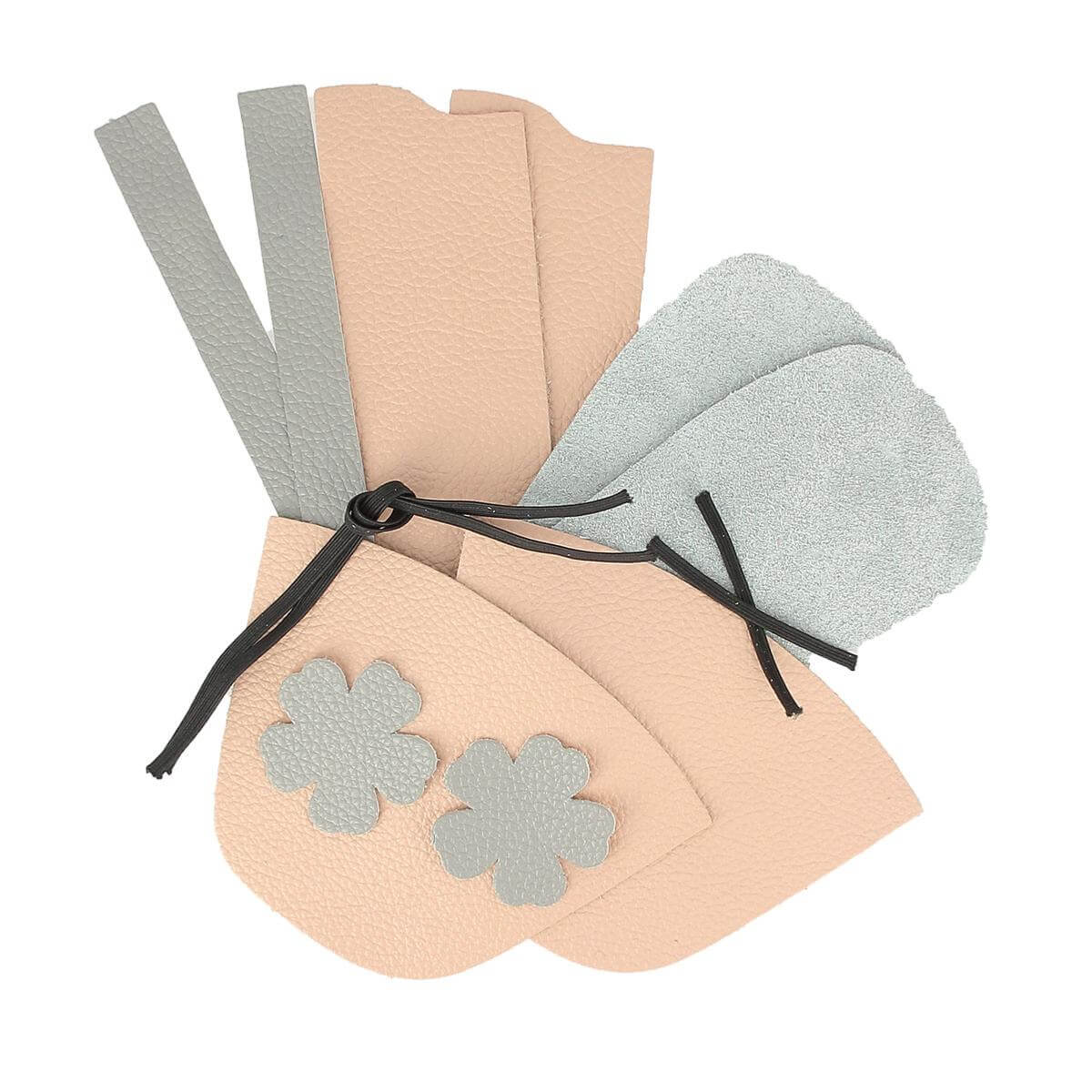


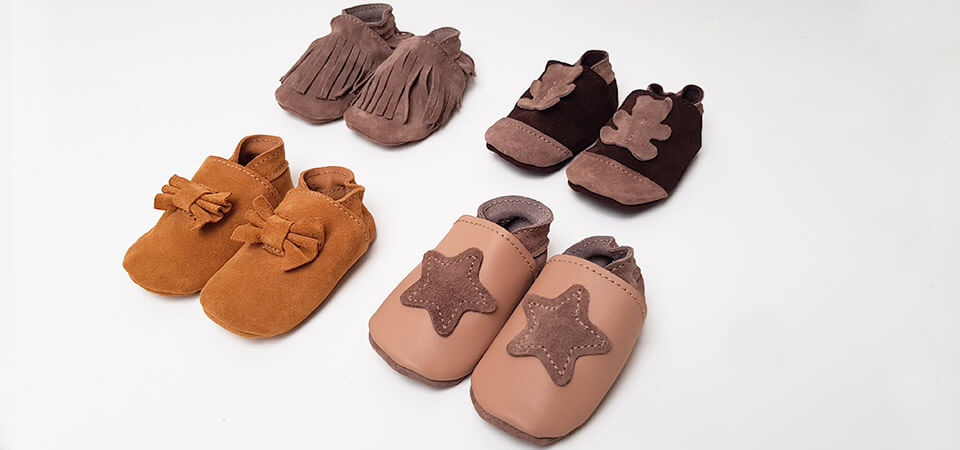









2 comments
Anonymous
il y a très longtemps que je veux me lancer
cette fois c est la bonne je fonce
un grand merci pour tout vos précieux conseils
et vos tutoriels très précis et très minutieux
Anonymous
Superbe, ces chaussons sont parfait après des sorties hivernales.